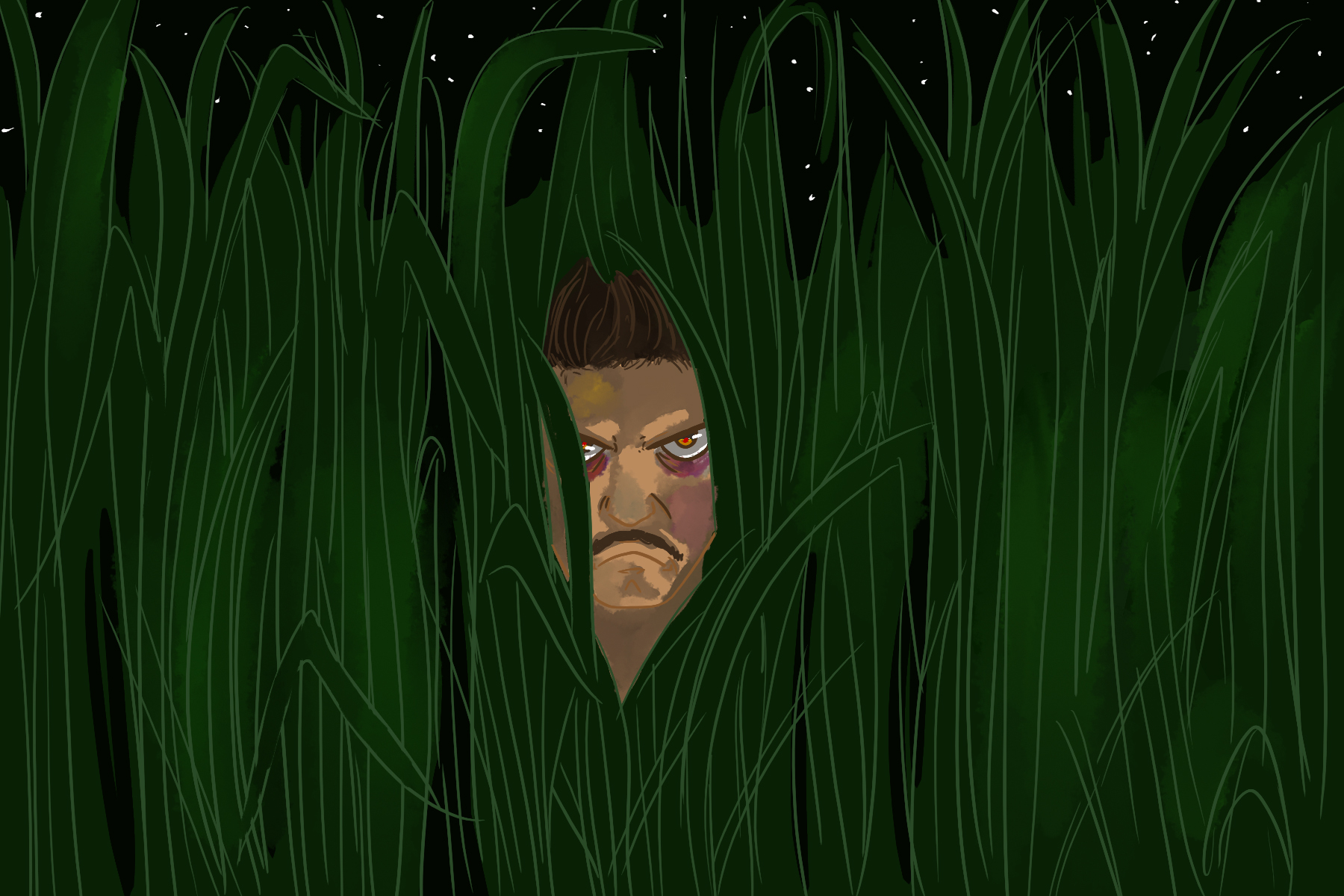If you’re a fan of scary movies, you’re probably familiar with the genre’s iconic creatures. Most of the time, these hall-of-fame monsters are frightening for obvious reasons. Witches, werewolves, ghosts and demons never have to explain their scare appeal to audiences; they’re simply petrifying.
Although such icons produce almost guaranteed terror, it’s much more impressive when film creators make a common sight scary. Only the most creative minds can bring out the horror in everyday objects. “In the Tall Grass,” a recent Netflix adaptation of Stephen King and Joe Hill’s novella, sets out to transform a green field into something sinister.
https://www.instagram.com/p/B0sw75oiuXw/?utm_source=ig_web_copy_link
“In the Tall Grass” begins with Cal and Becky, a brother-sister pair traveling to San Diego. The journey leads them to a lonely country road surrounded by lush, jungle-like grass. Becky, who is six months pregnant, gets carsick forcing the siblings to pull over on the side of the road. Unbeknownst to them, the tall grass sways — and even seems to breathe — with the vitality of a living entity.
As Becky and Cal prepare to resume their trip, a small boy’s voice echoes from inside the field. “Help,” the voice cries, “I’m lost in here! I’ve been trying to get to the road, but I can’t find it!” The siblings assume the boy is simply scared and are a little exasperated at his seemingly infantile predicament. After all, it’s just grass, right? Still, after a moment’s hesitation, the two plunge into the long blades to find him.
Immediately, “In the Tall Grass” succeeds at lending its namesake a menacing vibe. The opening scene slowly descends upon an endless sea of green. Groans resound from beneath its surface, but the field keeps its victims concealed. Suddenly, the grass swells and collapses, revealing its pulse to audiences.
After entering the field, Becky and Cal realize they underestimated the boy’s problem. The grass swallows its new visitors and separates them from one another. Once separated, the siblings spend hours playing a panic-ridden game of Marco Polo. As they call out the other’s name, their voices loudly echo over the field. However, each time Becky and Cal get close, they suddenly find themselves miles apart.
Finally, Cal stumbles upon the boy who supposedly lured them into the labyrinth. Tobin is a small, goblin-like child who seems to know all the field’s secrets. He is also lugging a dead crow. Originally, Tobin entered the grass with his mother and father after their dog darted into the jungle. Like Cal and Becky, the family cannot find each other, but listen to their loved ones’ voices reverberate all day long.
As you can imagine, the viewer’s panic builds as characters grow desperate and confused. The grass encroaches on each wanderer, creating a remarkable sense of claustrophobia in an open field. Mud clings to the victims’ feet, making each step more difficult than the last. Flies buzz around their sweat-drenched faces further disorienting the weary characters. Despite the oddity of its premise, “In the Tall Grass” manages to portray an overgrown pasture as truly frightening.
And yet, after the initial terror wears off, this movie’s lack of a solid plotline diminishes the fear caused by its unique villain. At first, the characters’ perpetual wandering adds to the suspense, but their predicament soon becomes simply frustrating. Aimlessly, Becky and Cal shout across the field over and over again. At some points, these unsuccessful conversation attempts seem to replace any actual plot development.
Still, the movie does contain some delightfully chilling one-liners. Upon meeting Cal, Tobin explains that, “You can find things, but it’s easier once they’re dead.” Later, after tenderly burying his dead crow, the boy declares that, “The field doesn’t move dead things around.” Horror fans, after hearing such statements, will immediately recognize the mind of Stephen King at work in the story.
After the long instances of panic-ridden yelling, the grass takes another victim: Becky’s ex-boyfriend, Travis. This greasy haired guitar player has come to look for the mother of his child, and soon unknowingly enters the inescapable field. Satisfied with its body count, the monster unveils another horrible surprise.
Thanks to its otherworldly relationship with time, this field can slaughter its inhabitants more than once. When Becky from one reality is horrifically slain, another simply reappears to take her place. Characters, after discovering the source of its sinister energy, must find a way to manipulate the field. If they fail, the entity will kill them over and over again in an endless game of cat and mouse.
Undoubtedly, creators of “In the Tall Grass” manage to portray an idyllic green pasture as truly horrifying. In this way, the story defies common horror movie tropes. However, there is one banal stereotype this movie doesn’t hesitate to perpetuate: oversexualized violence against women.
Arguably, the two female characters endure the most horrific deaths in the entire film. A villain overtaken by the field’s eerie energy repeatedly threatens to rape Becky. Because, of course, a previously inanimate field is naturally concerned with sex, right?
In a particularly intense moment, the camera continually pans over Becky’s tortured, heavily pregnant body. While “In the Tall Grass” refuses to settle for cheap horror elsewhere, these additions show that its creators aren’t entirely averse to vulgar shock appeal.
Overall, “In the Tall Grass” presents audiences with a mixture of strengths and weaknesses. The villain triggers fear, anxiety and confusion — all telltale signs of an entertaining horror movie. A sense of isolation and enclosure pervades the story, two sensations perfect for the labyrinth-centered tale. If you’re tired of the typical scary movie antagonists, this film’s enemy will definitely satisfy a craving for the unusual.
Although witches, werewolves, ghosts and demons are absent, “In the Tall Grass” nonetheless slips into the genre’s less admirable clichés. Still, as the credits roll, most viewers will reluctantly give accolades to the creators. After all, they’re tasked with appealing to an uncommon fear, since few individuals will approach this movie with a pre-existing aversion to grass.
















